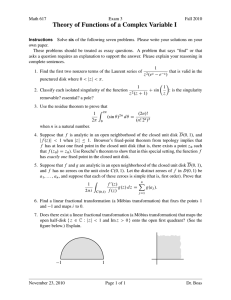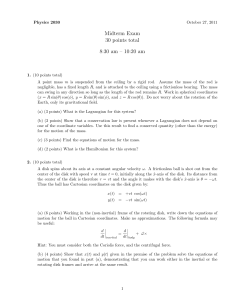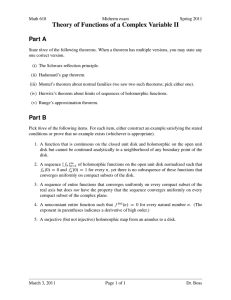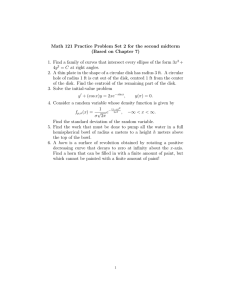MATH 18.01 - MIDTERM 3 REVIEW: SUMMARY OF SOME KEY CONCEPTS
advertisement
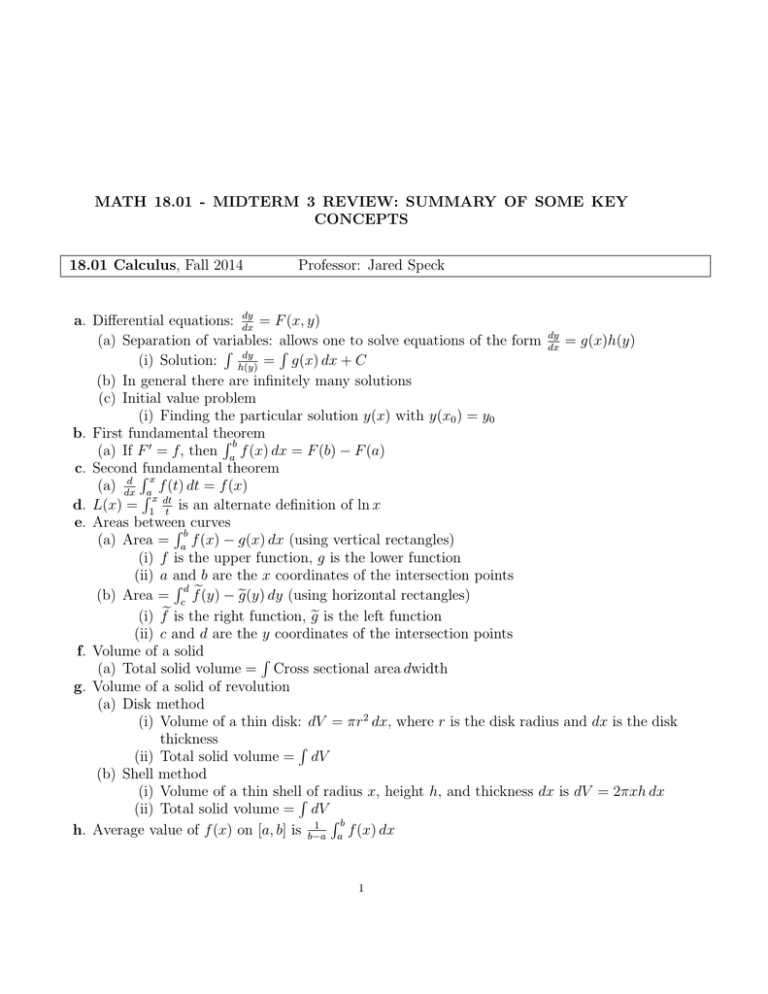
MATH 18.01 - MIDTERM 3 REVIEW: SUMMARY OF SOME KEY CONCEPTS 18.01 Calculus, Fall 2014 Professor: Jared Speck dy a. Differential equations: dx = F (x, y) dy (a) Separation of variables: allows one to solve equations of the form dx = g(x)h(y) R R dy (i) Solution: h(y) = g(x) dx + C (b) In general there are infinitely many solutions (c) Initial value problem (i) Finding the particular solution y(x) with y(x0 ) = y0 b. First fundamental theorem Rb (a) If F 0 = f, then a f (x) dx = F (b) − F (a) c. Second Rfundamental theorem x d (a) dx Rax fdt(t) dt = f (x) d. L(x) = 1 t is an alternate definition of ln x e. Areas between R b curves (a) Area = a f (x) − g(x) dx (using vertical rectangles) (i) f is the upper function, g is the lower function (ii) a and b are the x coordinates of the intersection points Rd (b) Area = c fe(y) − ge(y) dy (using horizontal rectangles) (i) fe is the right function, ge is the left function (ii) c and d are the y coordinates of the intersection points f. Volume of a solid R (a) Total solid volume = Cross sectional area dwidth g. Volume of a solid of revolution (a) Disk method (i) Volume of a thin disk: dV = πr2 dx, where r is the disk radius and dx is the disk thickness R (ii) Total solid volume = dV (b) Shell method (i) Volume of a thin shellR of radius x, height h, and thickness dx is dV = 2πxh dx (ii) Total solid volume = dV Rb 1 f (x) dx h. Average value of f (x) on [a, b] is b−a a 1






